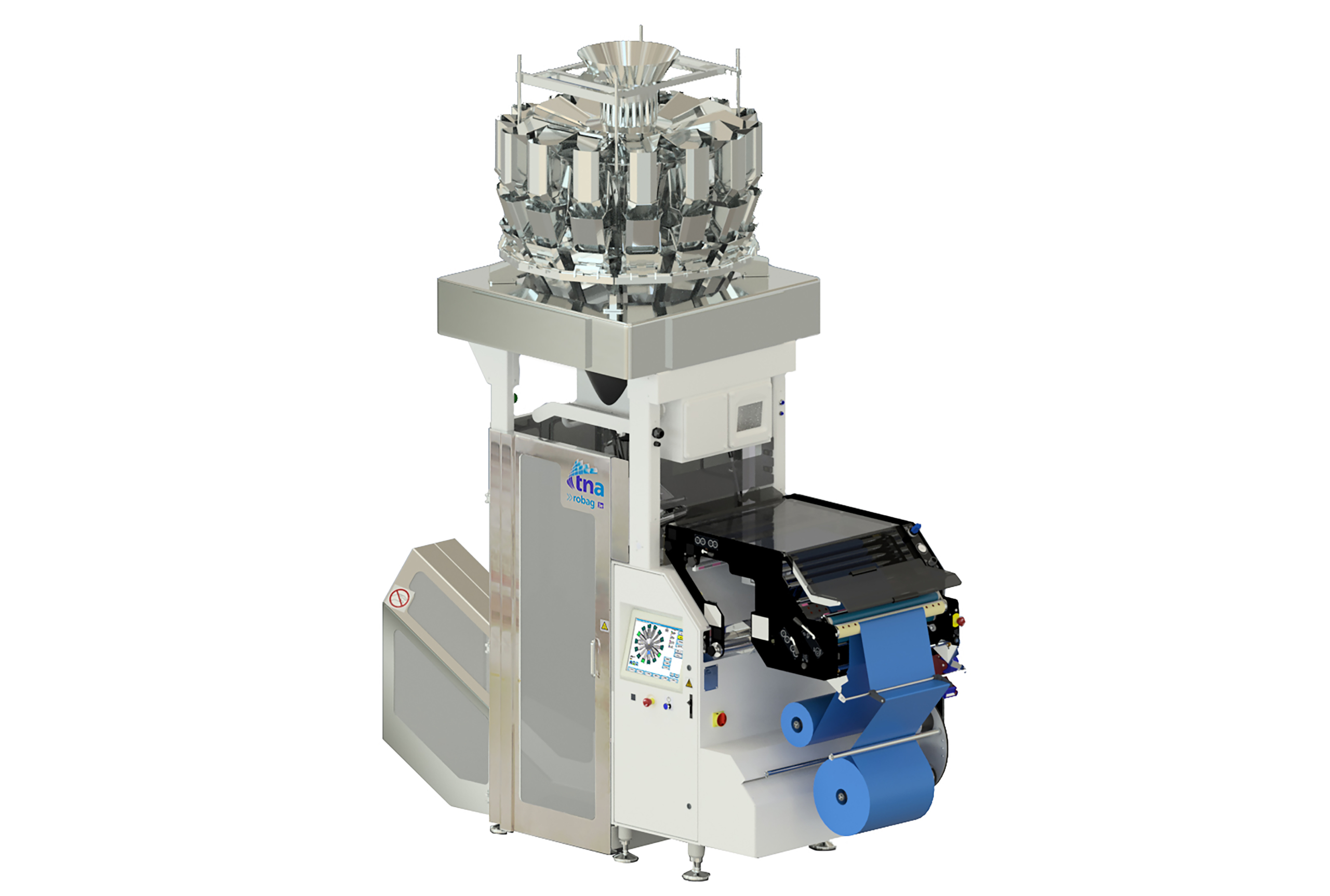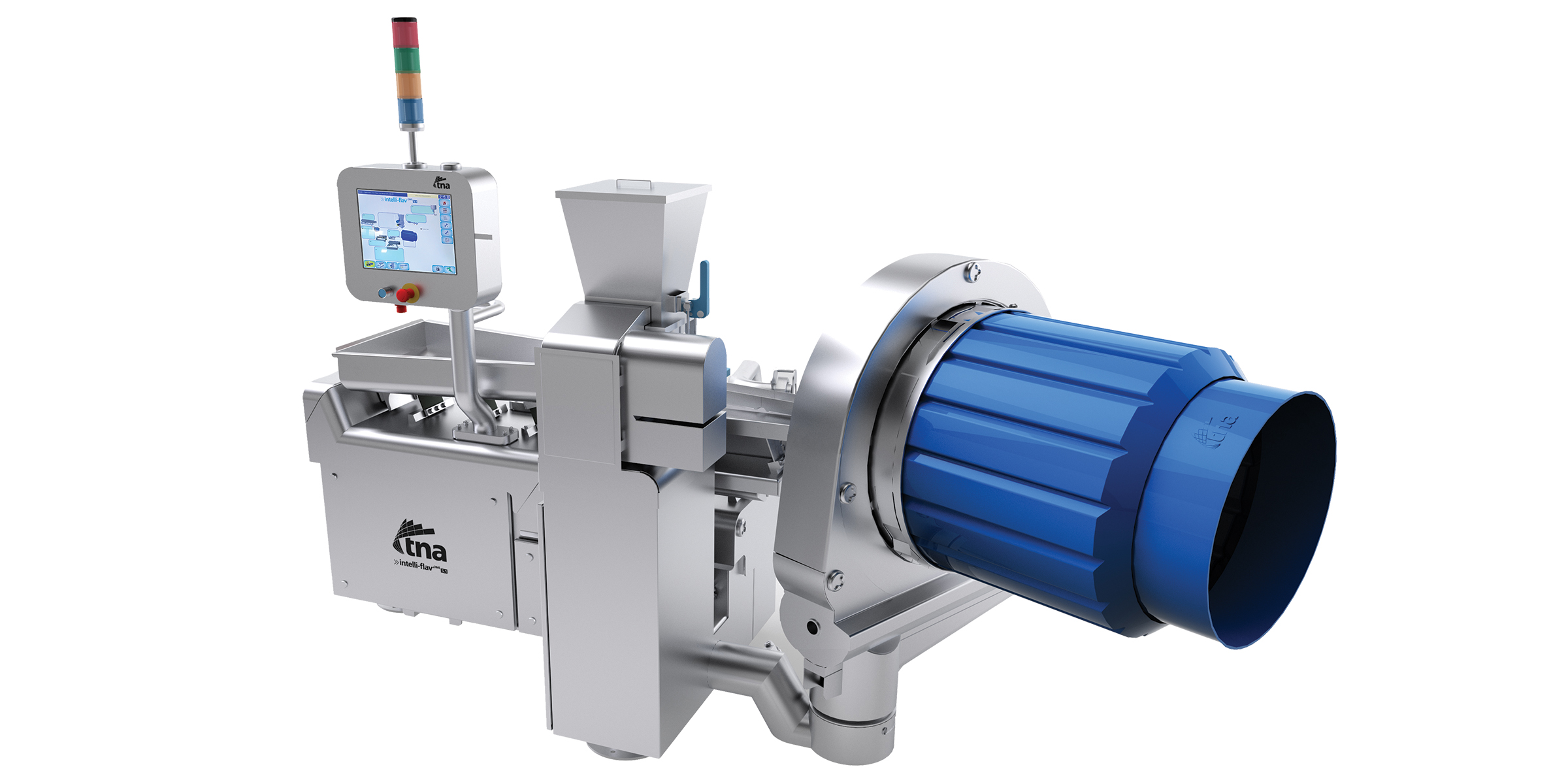Automation emerges as key solution to food manufacturing labour shortages
As the manufacturing sector faces critical workforce gaps projected to leave millions of positions unfilled by 2033, food producers are turning to advanced automation technologies to maintain production capacity and quality. TNA Solutions demonstrates how its integrated systems enable snack manufacturers to quadruple output whilst requiring fewer operators.
The manufacturing workforce challenge
The food manufacturing sector is confronting an unprecedented labour challenge. According to research from Deloitte and the Manufacturing Institute, the US manufacturing industry will require 3.8 million new workers by 2033, yet nearly half of these positions risk remaining vacant. This workforce gap threatens production capacity, consistency and ultimately market competitiveness for food producers already facing rising operational costs and changing consumer preferences.
TNA Solutions, a global food processing and packaging technology provider with over 40 years of experience and more than 16,000 systems installed across 130 countries, positions its automation technologies as a direct response to these
labour challenges. The company’s approach centres on complete production line solutions that enable manufacturers to maintain or increase output with fewer operators.
“As labour shortages persist, food manufacturers must turn to automation to ensure operational resilience,” explains Mukul Shukla, Vice President of TNA Solutions North America. The company’s integrated systems focus on efficiency optimisation, with technologies that allow five packaging lines to be operated by a single qualified staff member.
The ‘Perfect Pair’ – the tna robag 3e and tna auto-splice 3 – helps food producers address labour shortages and rising production costs.
Case studies demonstrate productivity gains
The impact of automation on production capacity is demonstrated by several manufacturers who have implemented TNA’s systems. Mister Bee Potato Chips, an American brand founded in 1951 and now operated by West Virginia Potato Chip Company, achieved a 400% increase in production capacity after modernising its facility with TNA’s high-speed packaging solutions.
Mary Anne Ketelsen, President of West Virginia Potato Chip Company, noted the dramatic improvement in throughput: “[Previous machinery] could only run 20-25 [bags per minute], whereas now with my new TNA machines, I can run 100-115 a minute. A very big upgrade.”
This productivity enhancement stemmed from TNA’s vertical form, fill and seal (VFFS) food packaging machine, the tna robag® 3ci, which features a rotary double configuration capable of speeds up to 150 bags per minute. The system’s patented auto-connect and unload assist technologies simplified the changeover process, requiring minimal operator intervention.
TNA’s implementation process at Mister Bee began with factory space optimisation. The company’s engineers worked collaboratively with Mister Bee to redesign the manufacturing layout, notably utilising Microsoft’s HoloLens technology during the buildout phase.
When a technical issue arose during installation, TNA’s response reinforced the importance of service quality in complex manufacturing systems. “When TNA came they said ‘hey, you will not have a problem’ and they lived up to our expectations,” said Ketelsen, referencing how TNA arranged for welders to resolve a design defect promptly and at their own expense.
Similar productivity gains were achieved by Burts Snacks Ltd, a premium British potato chip manufacturer based in Plymouth. Burts implemented TNA’s intelli-flav® OMS 5 on-head seasoning system and tna robag vertical form, fill and seal packaging solution to address production capacity constraints as consumer demand increased. The installation formed part of a broader expansion at their production facility.
John Joseph, Operations Director at Burts, highlighted the reliability factor in selecting TNA’s technology: “In the early days of Burts we invested in our first TNA seasoning and packaging system as it had a great reputation for reliability. For three years we ran the factory’s entire production output through this one system which contributed greatly to the growth of the company.”
The tna intelli-flav OMS 5.1 delivers consistent seasoning coverage and flavour for a wide range of snack products.
Technical specifications enabling efficiency
The technical specifications of TNA’s systems reveal how automation addresses both labour challenges and production efficiency. The tna robag 3e VFFS system, when combined with the tna auto-splice 3, allows manufacturers to achieve packaging speeds of up to 250 bags per minute while boosting packaging line efficiency to 98%.
This integration is particularly important given that 53% of US consumers cite rising prices as a key concern, according to McKinsey & Company’s Consumer Wise Q3 report. Manufacturers must balance affordability with consistent quality, making efficiency-enhancing automation essential.
The tna robag system’s modular design facilitates rapid changeovers of formers and other components, reducing downtime. TNA describes this as “pit-stop-style changeovers,” an approach that reduces the labour burden while increasing operational uptime. The simplified mechanical design also reduces maintenance requirements and training time for operators.
For seasoning application, the tna intelli-flav OMS 5.1 delivers precise, uniform application of both powder and liquid seasonings in a single drum. This ensures consistency in flavour, texture and appearance across products. The system incorporates an integrated heated oil system within its stainless-steel drum, accommodating various hot and cold products, including fried, baked and puffed snacks.
The ergonomic design aspects of the equipment demonstrate how automation can be optimised for the reduced workforce operating it. The intelli-flav features a lightweight design, rotating touchscreen accessible from both sides, and tool-less changeovers to improve efficiency and reduce operator fatigue.
For Burts, the tool-less changeover feature proved particularly valuable. The company produces over 100 SKUs across 24-hour operations, six days per week, necessitating frequent changeovers between different products and packaging formats. TNA’s system allows operators to switch from one bag size to another on the same packaging line using lightweight formers, while the intelli-flav system enables flavour changes in under three minutes.
As Joseph noted: “TNA’s high-performance solutions have proven robust, reliable and have enhanced our manufacturing capabilities, helping us expand operations.”
Meeting consumer demands with fewer workers
The automation benefits extend beyond addressing labour shortages to meeting evolving consumer preferences. Market research from Mintel indicates that 37% of global snack consumers believe unique flavours can make healthier snacks feel indulgent. Meanwhile, GlobalData highlights increasing demand for international flavours such as Korean BBQ, churro, turmeric and citrus-infused seasonings.
These consumer trends present manufacturing challenges, as producers must maintain consistency across increasingly diverse product lines. TNA’s intelli-flav OMS 5.1 allows snack producers to deliver consistent, high-quality flavours across multiple product types, enabling brands to innovate with new seasonings while maintaining quality control.
The flexibility of these systems is illustrated by Mister Bee’s operational improvements. “With TNA’s full line solution, we can now run two flavours of chips at the same time, and production has increased from 25 to 90 bags a minute,” reports Ketelsen. For Burts, known for its diverse flavour portfolio including Guinness, Chilli & Lime, and Maple Pigs in Blankets, the flexibility to quickly change between flavours while maintaining quality was paramount. The company produces snacks in various bag sizes and multi-packs, requiring packaging solutions that can adapt quickly as multiple flavours are packed from single batch cooking runs.
The relationship between TNA and its customers typically develops into long-term partnerships. Burts has maintained a relationship with TNA for 16 years, beginning with their first system installation in 2006. Similarly, Mister Bee continued its partnership with TNA after the initial installation, investing in a new fryer two years later.
Joseph from Burts explained this ongoing relationship: “We place a huge emphasis on choosing the right suppliers and developing partnerships that can contribute to our company’s success. We’ve had a commercial relationship with TNA for 16 years, so we’re incredibly familiar with the brand and have seen first-hand the benefits of their cutting-edge solutions.”
Future implications for food manufacturing
The food manufacturing sector’s trajectory suggests automation will become increasingly critical. For snack producers specifically, the combination of labour shortages, consumer demand for variety, and pressure to maintain affordability creates a complex operational environment.
TNA’s approach of offering complete line solutions rather than individual machinery components addresses the holistic nature of these challenges. This reflects a broader industry shift toward integrated production environments where efficiency is optimised across the entire manufacturing process.
The case studies demonstrate that automation investments yield quantifiable returns. Mister Bee’s 400% increase in production capacity and Burts’ ability to handle over 100 SKUs with consistent quality illustrate how automation can transform operational capabilities while mitigating labour shortage impacts.
As the only single-source global partner of complete solutions according to Shukla, TNA offers snack producers “a solution to improve efficiency, simplify operations and retain trained talent.” This retention aspect is significant – automation not only compensates for workforce gaps but can help manufacturers preserve their existing skilled workers by simplifying operations and reducing physical demands.
The food manufacturing sector’s automation journey is likely to accelerate as workforce challenges persist. Companies that successfully implement integrated automation solutions stand to gain significant competitive advantages in production capacity, consistency, and adaptability to consumer trends – all while operating with leaner workforces than previously possible.




